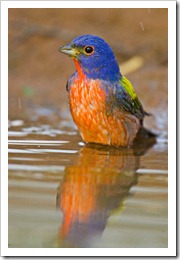Though he did not specifically mention Oklahoma weeds, I do tend to agree with Ralph Waldo Emerson when he defined a weed as “a plant whose virtues have not yet been discovered”. True, some of Oklahoma’s weeds are adorned with pretty flowers like the bushy aster below. And while other Oklahoma weeds may have interesting foliage, I do not want their interesting contributions in my lawn or flower beds.
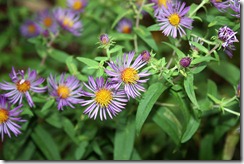
If you want to save time and money read on…
The First Step To Getting Rid of Oklahoma Lawn and Garden Weeds
In order to have a effective herbicide plan you will need to know what types of weeds that you have because most herbicides control only certain weeds. Identifying your weeds is critical in selecting the appropriate herbicide. Even if you can not positively identify your weeds (Oklahoma Weed Identification) just being able to distinguish whether they are grassy weeds or broadleaf weeds may very well be sufficient information for selecting the right herbicide.
All grassy weeds have long, narrow leaves with straight veins running parallel the full length of the leaf like the crabgrass pictured below.
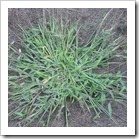
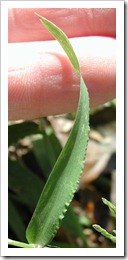
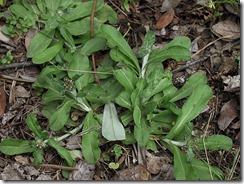
Knowing what weeds you have will allow you to know their life cycle. If you know what stage of growth the weed is in then you will also know when it is going to be most susceptible to a herbicide. Application at the right stage of growth will save you time and money.
Oklahoma Summer/Winter Annual Weeds
Oklahoma’s annual weeds complete their life cycle in one growing season depositing seeds that they will emerge from the following year. There are annual weeds that grow in the summer and produce seeds in the fall, and there are annual weeds that grow in the winter and produce seeds in late spring or early summer.
When To Treat Your Weeds
Control of Oklahoma’s spring and summer germinating weeds is best accomplished before they emerge. Early treatment is the only way to get almost complete control over weeds and to stop their cycle. A pre emergent should not be applied until the days warm to at least 50 degrees.
Once summer annual weeds have germinated in the spring they will typically die with the first hard frost in the fall. Examples of commonly found Oklahoma summer annual grassy weeds include crabgrass, foxtails, goose grass, and sandbur.
Crabgrass and foxtails are controlled in established turf grasses like Bermuda and buffalo by applying a pre emergence herbicides between March 15 to April 1.
Summer annual broadleaf weeds include asters, carpetweed, knotweed, puncture vine, common purslane, and spotted spurge can be safely controlled in established Bermuda grass perennial ryegrass, tall fescue, and zoysia grass by applications of 2,4-D, Banvel (dicamba), MCPP (mecoprop) combinations (Trex-San, Trimec, 33-Plus, etc.) soon after their emergence in May and June.
Read The Label And More Is Not Better
Once you know what type of weeds you have be sure to read the label and follow the directions on any poison that you buy insuring that your weed is mentioned and do not over apply or you will only be wasting your time and money.
Do not forget to feed and water the birds!
One of my Oklahoma favorites, the Painted Bunting
The “Original” Red Dirt Gardener
